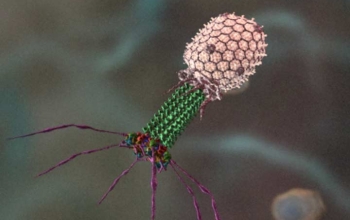- Genetic engineering is nothing new. Farmers have used cross-fertilization and selective breeding for millennia to alter plants and animals to promote desirable features that increase food production and meet other human requirements.
- Traditional fermentation methods have been used by artisans to turn milk into cheese, beer, and bread from grains. Such deliberate alteration of the natural environment has greatly improved human welfare. But in the last 30 years, advances in biotechnology have fundamentally changed our capacity to modify living things.
- The ability to extract and transfer DNA strands and complete genes, which contain the biochemical instructions guiding an organism's development, from one species to another has been developed by scientists.
- They are able to precisely modify the complex genetic makeup of individual living cells using cutting edge technology.
- For illustration, they can employ bacterial DNA to make corn resistant to herbicides or introduce genes from a coldwater fish into a tomato to produce a frost-resistant plant. Living modified organisms (LMOs), also referred to as genetically modified organisms (GMOs), are the end result (GMOs).
- A tomato that has had its genes altered through genetic engineering is referred to as a transgenic tomato or genetically modified tomato. The Flavr Savr tomato, which was created to have a longer shelf life, served as the first experimental genetically modified food and was available for a brief period of time starting on May 21, 1994.
- Cotton bt the only genetically modified crop now farmed in India is Bt cotton, which is spread across 10.8 million hectares. In India, bt cotton had first been utilised in 2002.
- For many individuals, this quickly developing knowledge poses a complex set of moral, environmental, social, and health concerns. They claim that because contemporary biotechnology is still so young, there are many unanswered questions regarding how its products could function, develop, and interact with other species.
- Could GM crops' capacity for tolerating pesticides, for instance, be transferred to related wild species? Could plants that have undergone genetic modification to stave off pests also damage helpful insects? Could a GMO harm ecosystems that are rich in biological diversity because to its improved competitiveness?
Biosafety and precaution
“an adequate level of protection in the field of the safe transfer, handling and use of living modified organisms resulting from modern biotechnology that may have adverse effects on the conservation and sustainable use of biological diversity, taking also into account risks to human health, and specifically focusing on transboundary movements”.
The Biosafety Protocol in action
An Advance Informed Agreement procedure
- The most rigorous procedures are reserved for GMOs that are to be introduced intentionally into the environment. These include seeds, live fish and other organisms that are destined to grow and that have the potential to pass their modified genes on to succeeding generations.
- The exporter starts by giving the government of the importing country detailed written information, including a description of the organism, in advance of the shipment.
- A Competent National Authority in the importing country acknowledges receipt of this information within 90 days and then explicitly authorizes the shipment within 270 days or states its reasons for rejecting it – although the absence of a response is not to be interpreted as implying consent.
- Bulk exports of genetically modified maize, soybeans, and other agricultural products meant for direct use as food or feed or for processing rather than as seeds for fresh crop growth make up the largest category of GMOs in international trade.
- The Protocol establishes a less complicated mechanism in place of mandating the adoption of the Advance Informed Agreement procedure for certain commodities. Governments must inform the international community of their choice to allow these products for domestic use via the Biosafety ClearingHouse under this arrangement. They must also give thorough details regarding their choice.
- Additionally, nations may decide whether or not to import certain goods based on their domestic legal framework, but they must then declare these choices through the Clearing-House. The Protocol aims to keep the additional costs for commodities producers and dealers to a minimum while preserving the openness of the global trading system.
Risk assessments
- While it is the responsibility of the country considering allowing the import of a GMO to ensure that a risk assessment is carried out, it has the authority to demand that the exporter perform the job or foot the bill. For many developing nations, this is especially crucial.
Risk management and emergency procedures
- No human endeavour or piece of technology is fully risk-free. People adopt new technology because they think the advantages could exceed the disadvantages.
- When a government learns that GMOs under its control may cross international boundaries owing to unlawful commerce or release into the environment, the Protocol mandates that government notify and consult any other impacted or potentially affected nations.
- They will be able to take emergency action or other necessary action as a result. To enhance international coordination, governments must create formal points of contact during emergencies.
Governments cannot achieve biosafety on their own: they need the active involvement and cooperation of the other stakeholders.
:max_bytes(150000):strip_icc():format(webp)/portrait-of-louis-pasteur-in-his-laboratory-517443464-5c897947c9e77c00010c2303.jpg)





